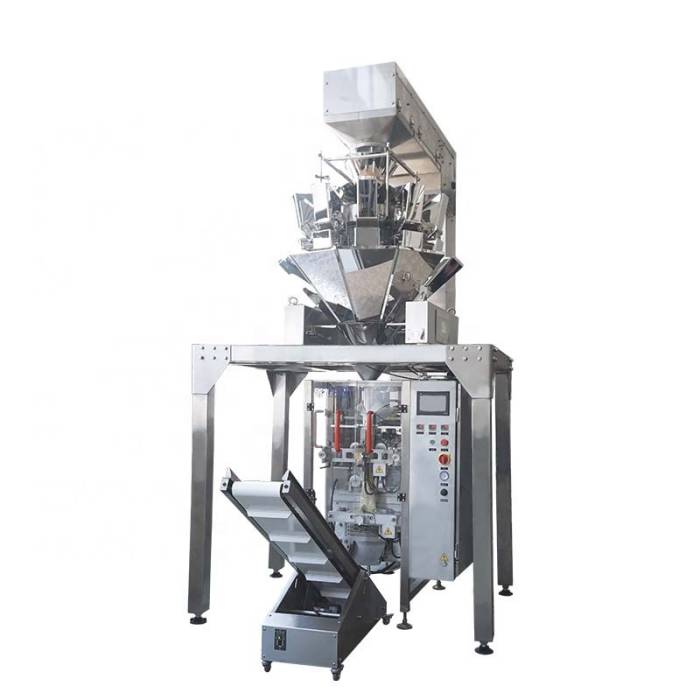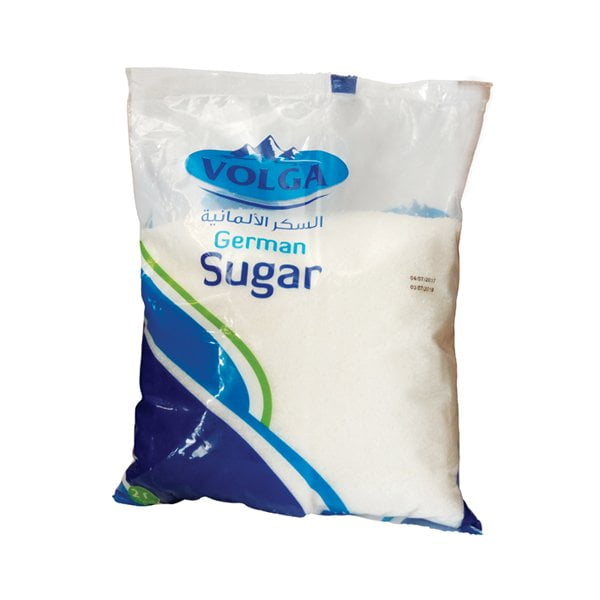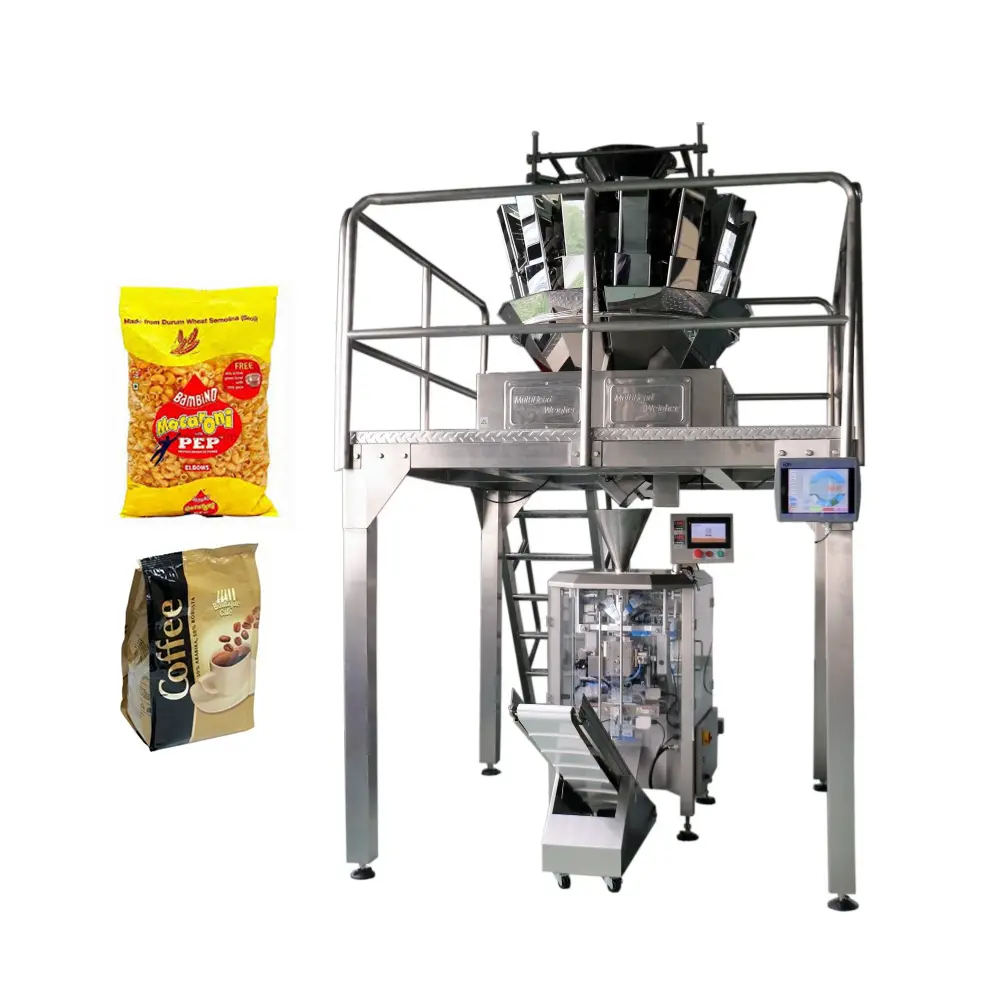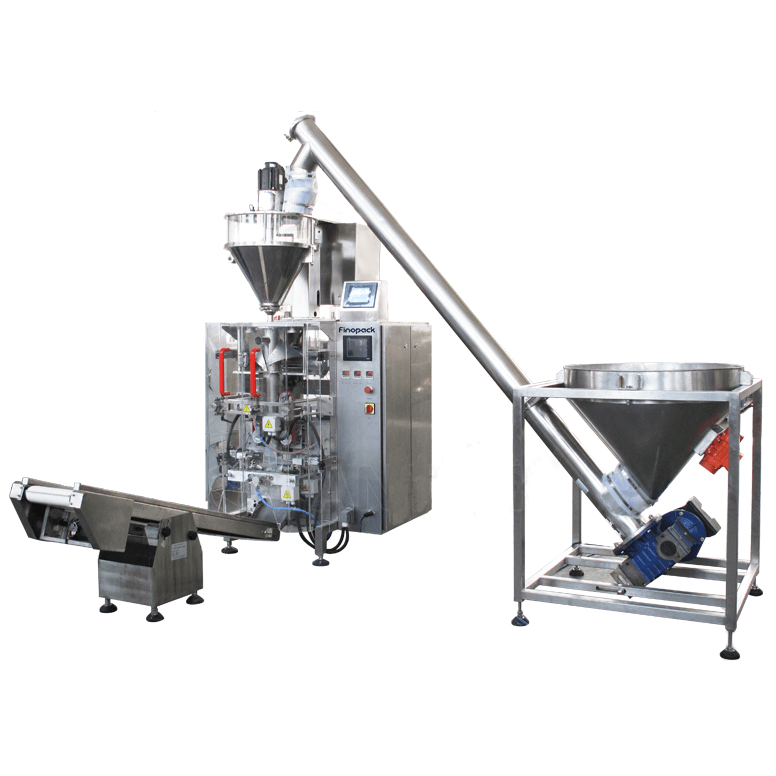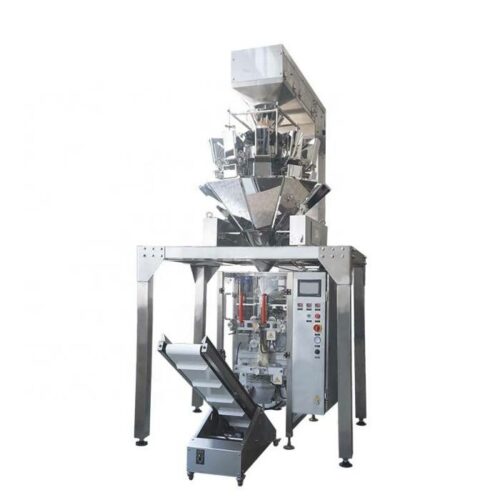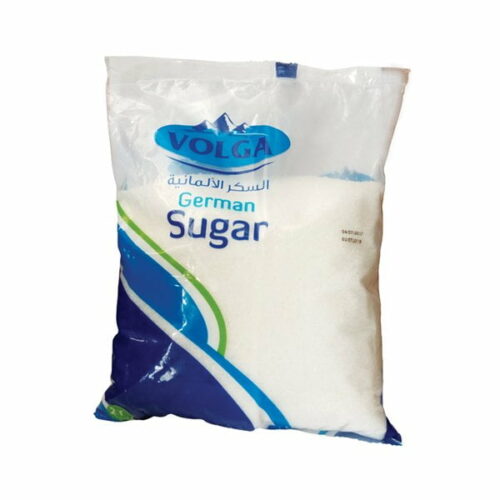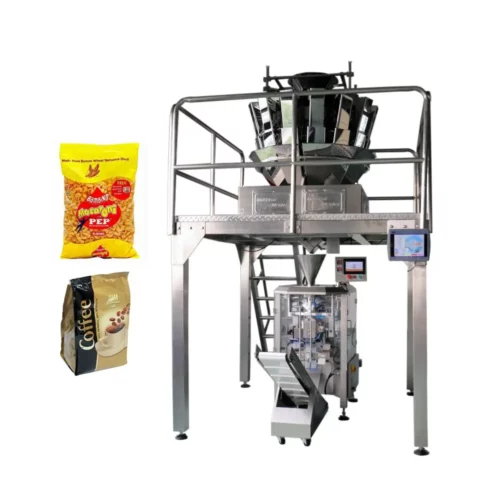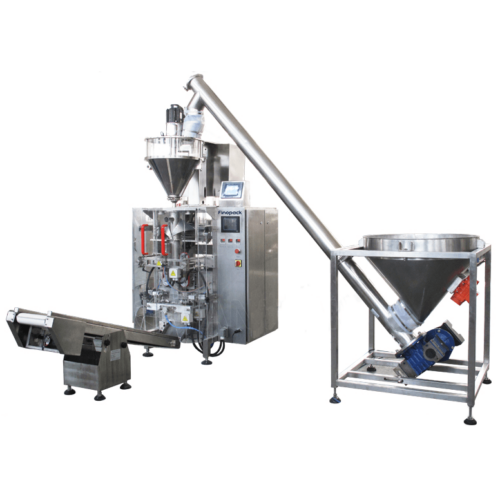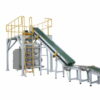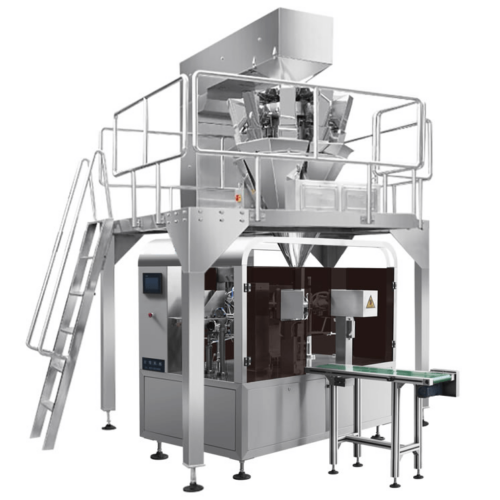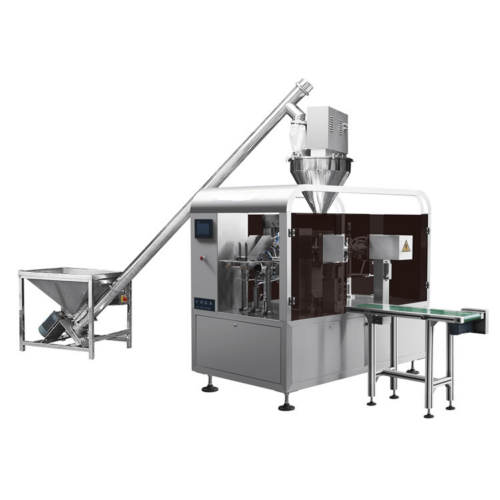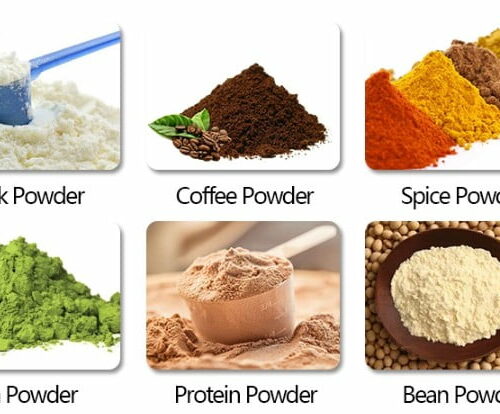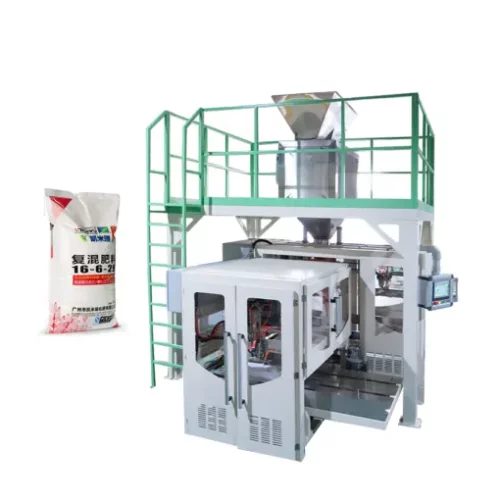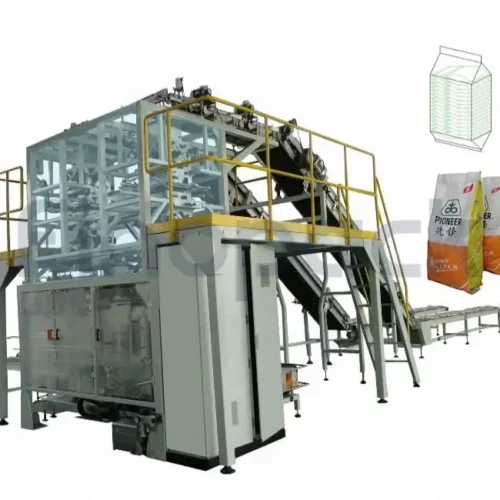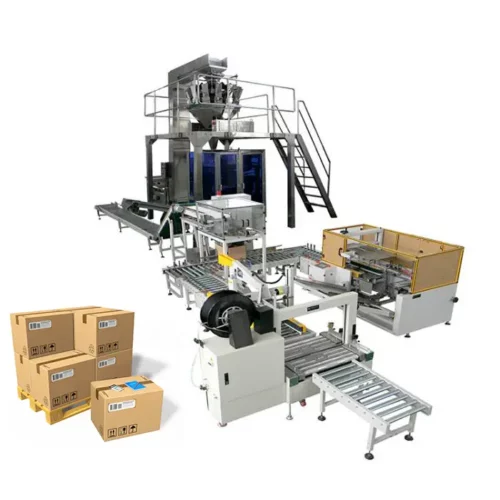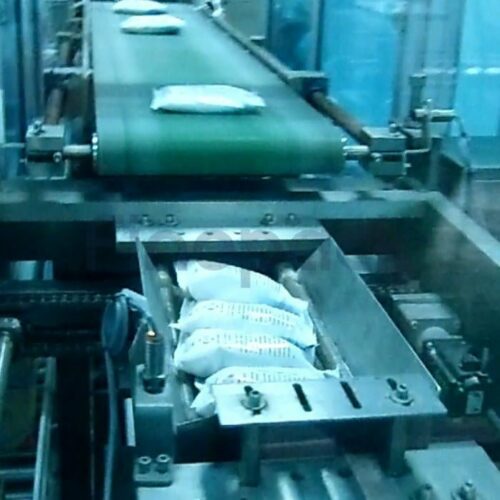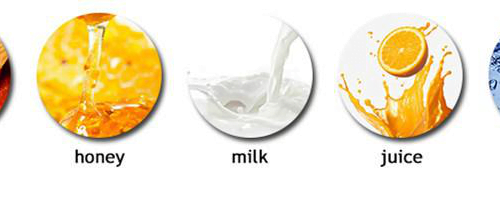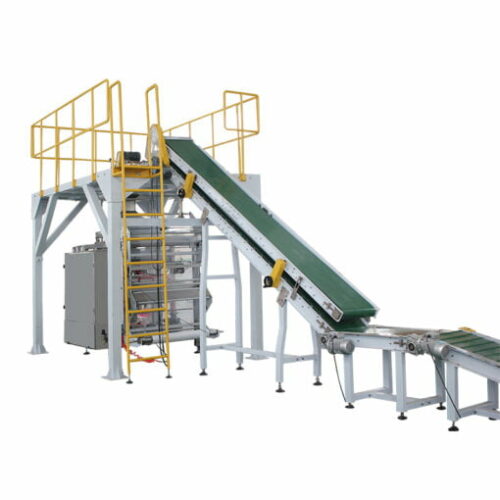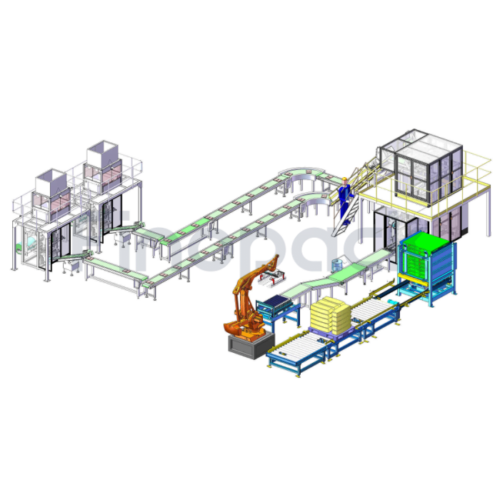List Technical Parameters of "Sugar Packing Machine"
A Sugar Packing Machine is an automated device designed for packaging sugar into different types of bags or pouches. The machine’s technical parameters include various details about its capacity, speed, precision, and operability. Here are key technical parameters:
1. Capacity:
– Packing Speed: Typically ranges from 30 to 120 packs per minute, depending on the machine’s model and the packaging size.
– Filling Range: Commonly between 10 grams to 2 kilograms per pack.
2. Accuracy:
– Weighing Accuracy: Usually ±0.2-0.5 grams, ensuring precise filling.
3. Bag Types:
– Supported Bag Styles: Pillow bags, gusseted bags, stand-up pouches, quad-seal bags.
4. Material Compatibility:
- Suitable for different packaging films such as laminated film, PE, aluminum foil, and paper.
5. Sealing Methods:
- Heat sealing, which can be impulse sealing or constant heat sealing, ensuring airtight packaging.
6. Power Supply:
- Typically operates on 220V/50Hz or 110V/60Hz, requiring power between 1KW to 3KW.
7. Air Supply:
- Compressed air requirement usually ranges around 0.6-0.8 MPa, with a consumption rate of about 0.3m³/min.
8. Control System:
- Utilizing PLC (Programmable Logic Controller) with an HMI (Human-Machine Interface) for easy operation and monitoring.
- Options for touch screen control panels.
9. Material and Build:
- Stainless steel construction, usually 304 or 316 grade, ensuring hygiene and corrosion resistance.
10. Dimensions and Weight:
– Machine dimensions vary but generally fall within: Length 1000-1500 mm, Width 800-1200 mm, Height 1500-2000 mm.
- Weight ranges from 300 to 800 kilograms.
11. Optional Features:
- Date and batch code printing.
- Nitrogen flushing systems.
- Modular components for easy maintenance.
These parameters ensure that Sugar Packing Machines provide efficient, accurate, and reliable packaging solutions for various industrial requirements.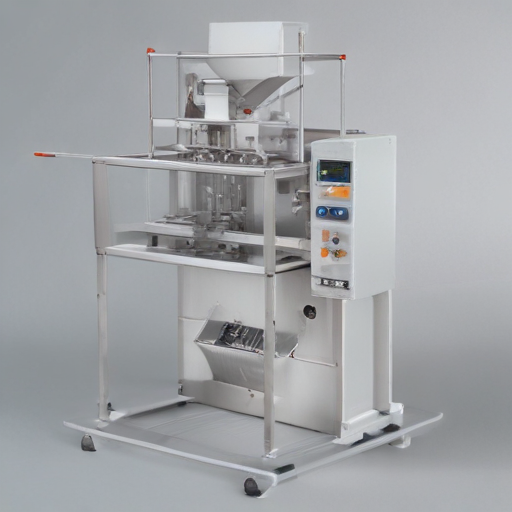
List Product features of "Sugar Packing Machine"
A Sugar Packing Machine is designed to efficiently and precisely package sugar into various types of containers, such as sachets, pouches, or bags. Here are its notable product features:
1. High-Speed Operations: Capable of packing hundreds to thousands of units per hour, significantly enhancing productivity.
2. Accuracy: Equipped with advanced microprocessors and sensors to ensure precise weight and quantity in each package, reducing waste.
3. Versatile Packaging Options: Supports multiple pack sizes and shapes, including sachets, pouches, and large bags, catering to diverse market needs.
4. Automated Systems: Features automatic feeding, measuring, filling, sealing, and cutting processes, minimizing the need for human intervention.
5. User-Friendly Interface: Intuitive touch-screen control panel for easy setup, operation, and troubleshooting.
6. Quality Control Mechanisms: Real-time monitoring systems detect and reject defective packages, ensuring high product quality.
7. Stainless Steel Construction: Made from food-grade stainless steel, offering durability, hygiene, and ease of cleaning.
8. Multi-Layer Sealing: Provides strong and reliable sealing options, including heat sealing and ultrasonic sealing, to maintain product freshness.
9. Customizable Settings: Adjustable speed, volume, and packaging parameters to cater to specific production requirements.
10. Compact Design: Space-saving footprint suitable for various factory layouts, maximizing available space.
11. Energy Efficiency: Designed with energy-efficient components to reduce operational costs.
12. Safety Features: Includes emergency stop buttons, protective covers, and compliance with international safety standards.
13. Integration Capabilities: Can be easily integrated with other machines in a production line, such as mixers, conveyors, and labeling machines.
14. Maintenance-Friendly: Easy access to components and simplified maintenance routines, reducing downtime.
15. Versatile Applications: Suitable for packing different forms of sugar, including granulated, powdered, and brown sugar.
16. Remote Diagnostics: Some advanced models offer remote monitoring and diagnostic capabilities to ensure smooth operations.
These features collectively make the Sugar Packing Machine an indispensable tool in the food packaging industry, delivering efficiency, accuracy, and high-quality packaging.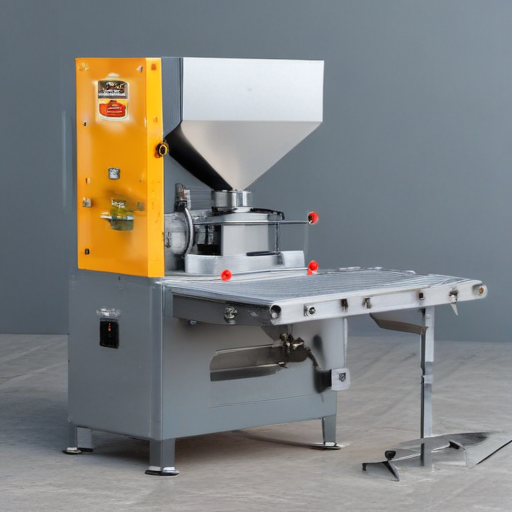
List Application of "Sugar Packing Machine"
A Sugar Packing Machine automates the process of packaging sugar into various types of containers or bags. Here are some key applications:
1. Commercial Use:
– Food Industry: Automates packing for sugar manufacturers, reducing labor costs and ensuring uniformity.
– Retail Packaging: Prepares small packets for grocery stores, supermarkets, and online retail, enhancing market reach.
– Confectionery Production: Efficiently supplies pre-measured sugar to candy companies, aiding in production consistency.
2. Industrial Use:
– Beverage Production: Provides precise sugar measurements for beverage manufacturers, ensuring quality control.
– Pharmaceutical Industry: Uses specific sugar quantities for medicinal syrup production.
– Baking: Supplies bakeries with precise sugar amounts, aiding in bread and pastry consistency.
3. Agriculture:
– Small-Scale Farmers: Helps local producers package their yield for market sale, boosting their income.
– Cooperatives: Assists farming cooperatives in standardizing their product packaging, enhancing market competitiveness.
4. Hospitality:
– Restaurants and Cafes: Supplies single-serve sugar packs for customer convenience.
– Hotels: Provides individual sugar sachets for in-room coffee and tea services.
5. Gifting and Personal Use:
– Gift Packs: Prepares beautifully packaged sugar bags for gift hampers, holidays, and special occasions.
– DIY Kits: Offers pre-packaged sugar for homemade baking and cooking kits.
6. Export and Trade:
– Custom Packaging: Prepares bulk and retail packets for international markets, adhering to different country regulations and standards.
– Logistics: Streamlines supply chain by providing consistent packaging, aiding in storage and transport efficiency.
7. Sustainability:
– Eco-friendly Packaging: Facilitates the use of biodegradable and recyclable materials, catering to environmentally conscious consumers.
A Sugar Packing Machine is pivotal in ensuring operational efficiency, consistency, and scalability across various sectors.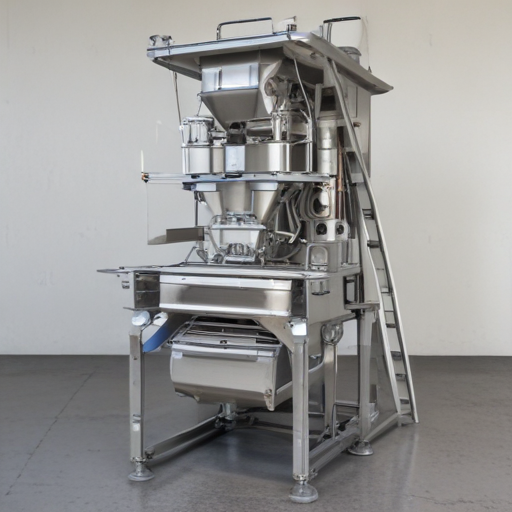
List Various Types of "Sugar Packing Machine"
Sure, here are several types of sugar packing machines:
1. Vertical Form Fill Seal (VFFS) Machines
– Function: Automatically form, fill, and seal sugar packets from a roll of film.
– Application: Common for small sachets or packs. Ideal for high-speed production.
2. Horizontal Form Fill Seal (HFFS) Machines
– Function: Creates pouches from film material and fills them horizontally.
– Application: Suitable for larger bags or pouches.
3. Stick Pack Machines
– Function: Specifically designed to create long, narrow packets, often seen for single servings.
– Application: Ideal for individual portions, common in hospitality and retail.
4. Rotary Packing Machines
– Function: Uses a rotating system to fill and seal pre-made pouches.
– Application: Efficient for pre-made pouch filling, offering consistency in package quality.
5. Multi-lane Packing Machines
– Function: Multiple lanes operate simultaneously to fill multiple packets in one go.
– Application: High throughput applications, suitable for sachets and small pouches.
6. Auger Filling Machines
– Function: Uses an auger to measure and fill sugar into containers.
– Application: Ideal for accurate filling and consistency, used in jars or rigid containers.
7. Weighing and Filling Systems
– Function: Utilizes scales to measure and dispense the exact amount of sugar.
– Application: High accuracy necessary for bulk packaging.
8. Flow Wrapping Machines
– Function: Wraps sugar packets in a continuous motion, typically forming a horizontal "flow" of packages.
– Application: Often used for individual sugar sticks or packets, providing high efficiency.
9. Vacuum Packing Machines
– Function: Removes air before sealing to increase shelf life.
– Application: Bulk sugar packaging where preservation is key.
10. Pillow Bag Packing Machines
– Function: Produces pillow-shaped pouches with durable seals.
– Application: Used for various sizes of sugar bags, popular in retail.
Different machines cater to different needs, from individual servings to bulk packaging, providing versatility across various sugar packaging applications.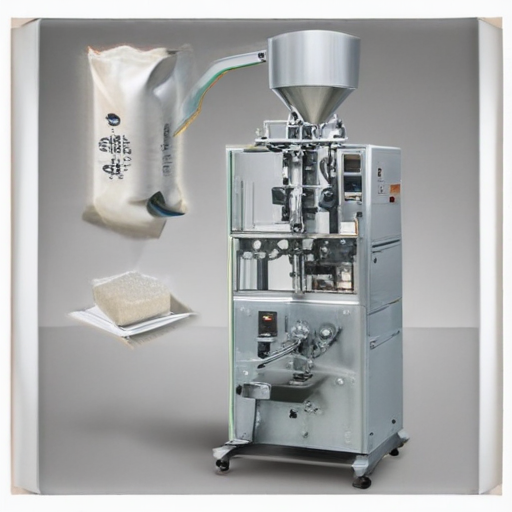
Custom Manufacturing Options for Sugar Packing Machine
Creating a custom sugar packing machine involves several key considerations to meet specific needs. The objective is to ensure efficiency, precision, and reliability in packing different types of sugar. Here are some custom manufacturing options:
1. Machine Type:
– Form-Fill-Seal (FFS) Machines: Ideal for creating sealed pouches or sachets.
– Vertical or Horizontal Packing Machines: Depending on space and specific packing needs.
2. Material Handling:
– Hopper Design: Customizable hopper sizes for consistent sugar flow.
– Feeding Systems: Options like auger fillers, volumetric cups, or weighers for accurate dosing.
3. Packaging Style:
– Pouches: Stand-up, pillow, or gusseted bags.
– Sachets: Single, twin, or multi-lane sachets for portion control.
4. Material Compatibility:
– Film Materials: Customizable to handle different thicknesses, laminates, or eco-friendly materials.
– Heat Sealing: Ensuring compatibility with specific packaging films.
5. Automation Level:
– Manual to Fully-Automated: Varying degrees of automation, from semi-automated to fully automated systems.
– Integration with Existing Systems: Ensuring cohesive integration with current manufacturing lines.
6. Speed and Capacity:
– Custom Speeds: Ranging from low-volume to high-speed industrial applications.
– Scale of Operation: Scalable solutions to grow with increasing production demands.
7. Precision and Quality Control:
– Sensors and Detectors: For weight verification and ensuring pack integrity.
– Reject Mechanisms: For removing non-compliant packages from the production line.
8. Customization of Controls:
– User Interface: Tailored HMI for intuitive operation.
– Programmable Logic Controllers (PLC): For advanced control and customization.
9. Support and Maintenance:
– Training Programs: Custom training for operators and maintenance staff.
– Spare Parts: Availability of tailored spares and ongoing technical support.
These options enable the creation of a sugar packing machine tailored to specific requirements, enhancing efficiency, reducing waste, and improving product consistency.
List Quality Control and The Manufacturing Process of "Sugar Packing Machine"
Quality Control in Sugar Packing Machine Manufacturing
1. Raw Material Inspection:
- Ensure all materials meet industry standards.
- Check for defects and consistency in parts.
2. Component Testing:
- Validate functionality of individual parts such as sensors, motors, and electric controls.
- Perform stress and load tests.
3. Assembly Line Checks:
- Inspect each stage of assembly for precision.
- Verify correct assembly techniques are followed.
4. In-Process Quality Monitoring:
- Conduct real-time inspections during assembly.
- Use automated systems for consistency and accuracy.
5. Safety Testing:
- Ensure machine complies with safety regulations.
- Test emergency stop functions and safety guards.
6. Final Product Testing:
- Run full cycles to check performance.
- Test with actual sugar to ensure accurate packing.
7. Documentation and Reporting:
- Maintain records of inspections and tests.
- Document any deviations and corrective actions.
8. Customer Feedback:
- Collect user feedback for continuous improvement.
Manufacturing Process of Sugar Packing Machine
1. Design and Planning:
- Develop detailed engineering drawings.
- Plan production schedule and workflow.
2. Material Procurement:
- Source high-quality raw materials and components.
3. Machining and Fabrication:
- Cut, shape, and assemble essential parts using CNC machines.
- Weld or bolt parts accurately.
4. Assembly:
- Assemble major components like the hopper, conveyor, and sealing system.
- Integrate electronic and pneumatic systems.
5. Wiring and Plumbing:
- Install electrical wiring and control panels.
- Connect pneumatic or hydraulic lines, if applicable.
6. Software Installation:
- Load and configure the control software.
- Program machine settings and parameters.
7. Calibration and Testing:
- Calibrate sensors, weight scales, and packing precision.
- Conduct trial runs to ensure functionality.
8. Finishing:
- Apply protective coatings and finishes.
- Label essential parts and safety warnings.
9. Quality Control Assessment:
- Execute final quality control checks.
10. Packaging and Shipping:
- Safely pack the machine for delivery.
- Include user manuals and maintenance guides.
This streamlined process ensures the production of reliable, efficient, and high-quality sugar packing machines.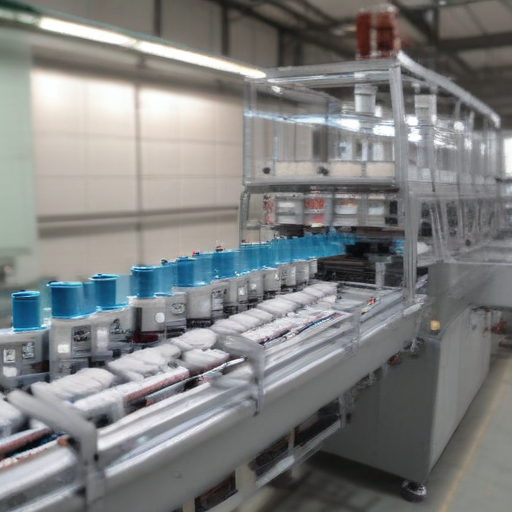
How to use "Sugar Packing Machine"
Operating a sugar packing machine efficiently involves several steps. Here’s a concise guide to get you started:
1. Preparation:
– Read the Manual: Familiarize yourself with the manufacturer’s instructions and safety guidelines.
– Inspect the Machine: Check for any damage or wear, ensuring all parts are in good condition.
– Load Material: Fill the hopper with the sugar. Ensure it’s clean and free from contaminants.
2. Setup:
– Turn On the Machine: Switch on the main power and control panel.
– Set Parameters: Input desired settings such as weight per pack, packaging speed, and packaging material type.
3. Calibration:
– Test Runs: Conduct a few initial runs to calibrate the machine for accuracy.
– Adjustments: Fine-tune settings to correct any discrepancies in weight or sealing.
4. Operation:
– Loading Packing Material: Place the packaging film or bags in the designated area.
– Start the Process: Initiate the packing process by pressing the start button.
– Monitoring: Continuously monitor the machine to ensure it’s operating smoothly and sugar is being packed correctly.
5. Troubleshooting:
– Identify Issues: If there’s a problem like jams or incorrect weights, pause the machine.
– Resolve Problems: Follow the troubleshooting guide in the manual to fix the issues.
6. Post-Operation:
– Turn Off the Machine: Once packing is complete, turn off the machine and main power.
– Clean: Clean the machine to remove any residual sugar and prevent contamination.
– Maintenance: Perform regular maintenance as recommended by the manufacturer to ensure longevity and efficiency.
7. Safety:
– Wear Protective Gear: Use gloves, masks, and other safety equipment as needed.
– Stay Alert: Be vigilant and stop the machine immediately if any abnormal activity occurs.
By following these steps, you’ll ensure the efficient and safe operation of a sugar packing machine.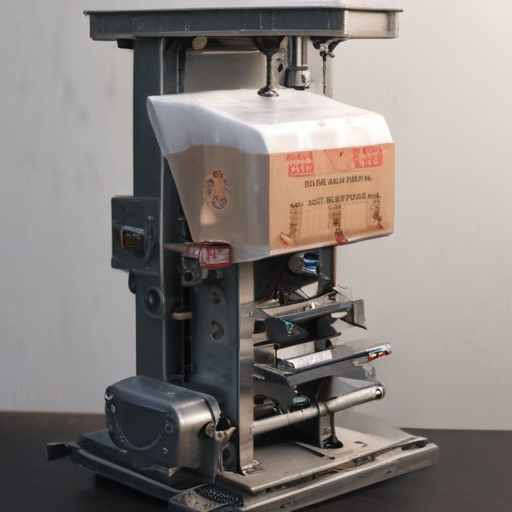
List Properties and Terms of "Sugar Packing Machine"
Sure, here’s a concise overview of the properties and terms related to a sugar packing machine:
Properties:
1. Automation Level: Ranges from semi-automatic to fully automatic.
2. Filling Accuracy: High precision to minimize waste and ensure consistency.
3. Speed: Depends on the model, typically measures in packs per minute (PPM).
4. Capacity: Varies according to machine type, can handle different packing sizes from small sachets to bulk bags.
5. Material Compatibility: Suitable for various sugar forms including granulated, powdered, and brown sugar.
6. Sealing Technology: Includes heat sealing, ultrasonic sealing, or impulse sealing for secure and airtight packing.
7. Material of Construction: Usually stainless steel for food safety and durability.
8. Control System: Modern machines often feature PLC (Programmable Logic Controller) controls.
9. User Interface: Touchscreen interfaces for easy operation and monitoring.
10. Packaging Formats: Versatile options like sachets, pouches, bags, or sticks.
11. Hygiene and Safety: Designed to meet food industry standards for hygiene and safety.
Terms:
1. PLC: Programmable Logic Controller, used for automation.
2. PPM: Packs Per Minute, a measure of machine speed.
3. HMI: Human-Machine Interface, usually a touchscreen interface.
4. Sealing Jaw: Component that seals the packaging material.
5. Auger Filler: A specific type of filler used for powdered sugar.
6. Form Fill Seal (FFS): A type of technology that forms the package, fills it, and seals it in one operation.
7. Dosage System: Mechanism to measure and dispense precise amounts of sugar.
8. Batch Coding: Printing system for traceability, often integrates directly with the machine.
9. Sachet: Small, flat packets commonly used for single-serve portions.
10. Gusseted Bags: Bags with side folds to allow more capacity.
11. Servo Motor: Motor for precise control of the filling and sealing operations.
12. VFFS: Vertical Form Fill Seal, a common type of sugar packing machine that operates vertically.
13. Hopper: Storage container that feeds sugar to the dosing system.
This summary captures the main properties and key terms without exceeding 300 words, providing a broad yet specific understanding of sugar packing machines.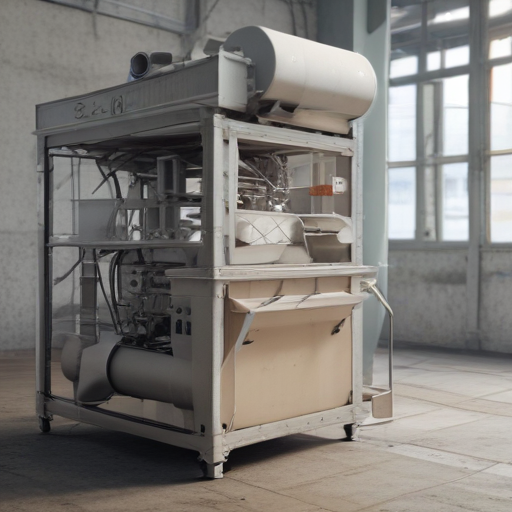
List The Evolution history of "Sugar Packing Machine"
The evolution of the sugar packing machine reflects significant advancements in industrial automation and packaging technology over the years. Here’s a brief chronology:
-
Manual Packaging (Pre-19th Century)
- Early sugar packaging was entirely manual. Sugar was measured by hand and wrapped in paper or cloth.
-
Early Mechanical Devices (19th Century)
- The Industrial Revolution introduced basic mechanical devices such as simple scales and hand-operated machines, improving measuring accuracy and efficiency.
-
Semi-Automatic Machines (Early 20th Century)
- The early 1900s saw the development of semi-automatic packing machines. These machines combined some manual processes with mechanical devices, improving speed and reducing labor.
-
Fully Automatic Machines (Mid-20th Century)
- By the 1950s and 1960s, fully automatic sugar packing machines were developed, capable of measuring, filling, and sealing packages without human intervention. Electromechanical devices and early sensors played a significant role.
-
Microprocessor-Controlled Machines (Late 20th Century)
- The late 20th century brought microprocessor-controlled machines. These machines featured advanced control systems, allowing for greater precision, faster operation, and the ability to handle different packaging formats.
-
Introduction of Integrated Systems (1990s)
- Integrated systems, combining packing with other processing stages like mixing and weighing, emerged. These systems offered comprehensive, streamlined solutions to sugar packaging.
-
Digital and Smart Packing Machines (21st Century)
- The 21st century has seen the advent of digital and smart packing machines equipped with sophisticated sensors, automation software, and connectivity for real-time monitoring and control. These machines offer high efficiency, flexibility, and adaptability to various packaging needs.
-
Sustainable and Eco-Friendly Innovations (Current Trends)
- Modern sugar packing machines are increasingly incorporating eco-friendly materials and energy-efficient technologies, reflecting a growing trend towards sustainability in packaging operations.
This progression from manual to highly automated and smart systems highlights the technological advancements that have continuously optimized the sugar packing process, ensuring higher efficiency, precision, and adaptability to market demands.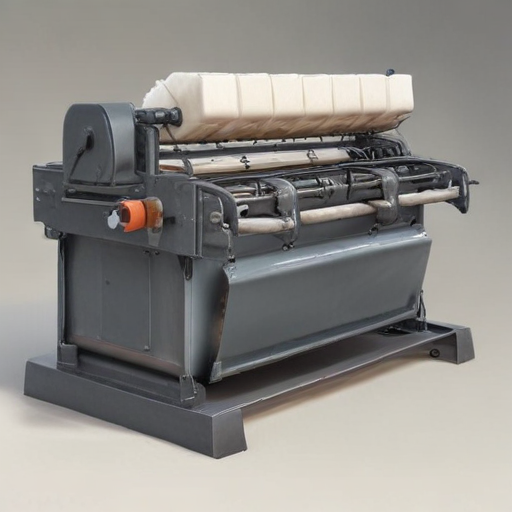
How to Select a Reliable Sugar Packing Machine
Selecting a reliable sugar packing machine is crucial for ensuring product quality and operational efficiency. Here is a condensed guide to help you make an informed decision:
1. Identify Your Needs:
– Packaging Type: Determine whether you need sachets, pouches, or bags.
– Capacity: Estimate the volume of sugar you need to pack per hour or day.
– Accuracy: Look for machines with precise dosing mechanisms to maintain consistency and minimize waste.
2. Quality and Durability:
– Materials: Opt for machines made from food-grade stainless steel to ensure hygiene and longevity.
– Build Quality: Check for robust construction and reliable components.
3. Advanced Features:
– Automation Level: Decide between semi-automatic and fully automatic machines based on your workflow and labor costs.
– Control Systems: Look for user-friendly interfaces and advanced control systems for easy operation and adjustments.
4. Manufacturer Reputation:
– Experience: Choose manufacturers with a solid track record and expertise in sugar packing machines.
– Customer Reviews: Research customer feedback and testimonials.
5. Service and Support:
– Availability of Spare Parts: Ensure that replacement parts are easily obtainable.
– Technical Support: Evaluate the manufacturer’s after-sales service, including installation, training, and troubleshooting support.
6. Compliance and Certifications:
– Regulations: Ensure the machine complies with industry standards and local regulations.
– Certifications: Look for certifications like ISO, CE, or any relevant to food safety.
7. Cost vs. Value:
– Initial Investment vs. Long-term Costs: Consider not just the purchase price but also maintenance, energy consumption, and potential downtime.
By prioritizing these factors, you can select a reliable sugar packing machine that meets your operational needs and ensures a high-quality end product.
List "Sugar Packing Machine" FAQ
Sugar Packing Machine FAQ
-
What is a Sugar Packing Machine?
A sugar packing machine is automated equipment designed to fill and seal sugar into various packaging formats, such as sachets, pouches, or bottles. -
What types of sugar can these machines handle?
These machines can handle granulated sugar, powdered sugar, and even brown sugar, depending on the machine’s specifications. -
What are the available packaging formats?
Common formats include sachets, pouches, stick packs, jars, and bottles. The choice depends on your marketing and logistical needs. -
What is the typical speed of a Sugar Packing Machine?
Speed varies with the model and packaging type. High-speed machines can pack up to several hundred sachets or pouches per minute. -
Are these machines suitable for other products?
Yes, many sugar packing machines can also handle other granular or powdered products like salt, spices, or coffee. -
How precise is the measurement?
Modern sugar packing machines often feature highly accurate measuring systems, like auger fillers or volumetric cups, ensuring precise weight. -
What are the maintenance requirements?
Routine maintenance typically includes cleaning, checking for wear and tear, and occasionally replacing parts. Regular maintenance helps ensure longevity and performance. -
Is it easy to switch between different packaging sizes?
Yes, many machines are designed to be adjusted easily to accommodate various packaging sizes, often through simple adjustments or interchangeable parts. -
What materials are used in the construction of these machines?
Most sugar packing machines are made from stainless steel to ensure durability and meet hygiene standards. -
Are there customization options available?
Yes, many manufacturers offer customization options to suit specific needs like automated feeding systems, product counting, or batch coding. -
What is the power requirement?
This varies by machine model but generally ranges from 220V to 380V, depending on the complexity and speed of the machine. -
How do these machines improve productivity?
Automating the packing process reduces manual labor, minimizes errors, and significantly increases packing speed and efficiency.
—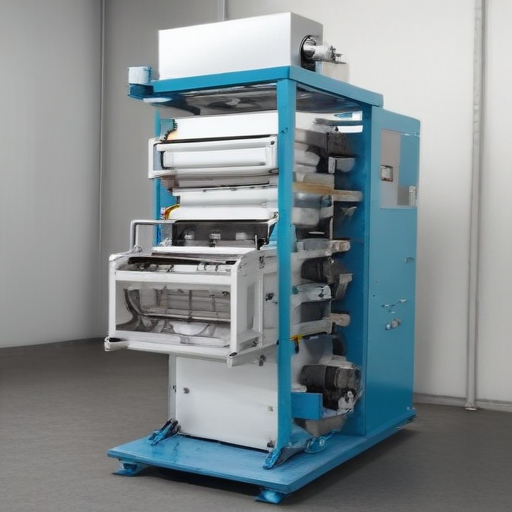
Top 10 FAQ with answer about Sugar Packing Machine for Buyer Sourcing from China
Sure! Here are the top 10 frequently asked questions (FAQs) about sourcing sugar packing machines from China, along with their succinct answers:
-
What Types of Sugar Packing Machines Are Available?
– Vertical Form Fill Seal (VFFS): For granular and powdered sugar.
– Stick Pack Machines: For single-serve packets.
– Sachet Packing Machines: For small, flat packets.
– Pillow Pack Machines: For bulk packing in pillow-shaped bags. -
What Materials Are Used in Construction?
- Most sugar packing machines are made from food-grade stainless steel to ensure durability and safety.
-
What is the Capacity Range?
- Machines can range from small-scale models packing 20-500 grams per minute to large-scale industrial models packing up to several kilograms per minute.
-
What Certifications Should I Look For?
- Look for ISO, CE, and FDA certifications to ensure quality and compliance with international standards.
-
What is the Leads Time for Delivery?
- Lead times can vary, typically ranging from 30 to 90 days, depending on the machine’s complexity and customizations.
-
Can the Machine Handle Different Types of Sugar?
- Yes, most machines are designed to handle various forms of sugar, such as granulated, powdered, and crystal sugar, with minor adjustments.
-
Is Technical Support Available?
- Reputable manufacturers offer technical support, including installation guidance, maintenance, and after-sales service either online or on-site.
-
What Are the Payment Terms?
- Common payment terms include a 30% deposit upfront and the remaining 70% paid before shipping. Letter of Credit (L/C) and Telegraphic Transfer (T/T) are widely accepted.
-
Can Machines Be Customized?
- Yes, manufacturers often offer customization options to meet specific packaging requirements, such as different bag sizes and shapes.
-
How Do I Verify the Manufacturer?
- Conduct due diligence by checking the company’s credentials, online reviews, and client testimonials. It’s also beneficial to visit the factory if possible.
By addressing these questions, buyers can make an informed decision when sourcing sugar packing machines from China.

